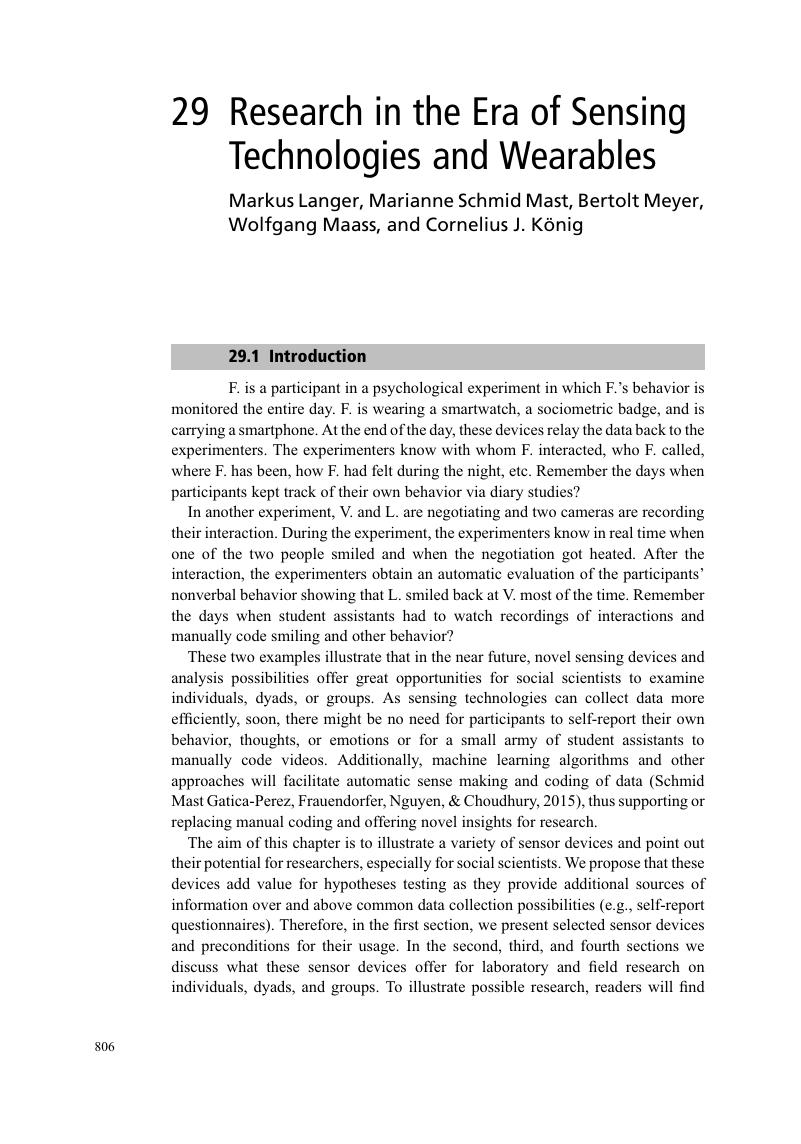Book contents
- The Cambridge Handbook of Technology and Employee Behavior
- The Cambridge Handbook of Technology and Employee Behavior
- Copyright page
- Dedication
- Contents
- Notes on Contributors
- Preface
- Acknowledgments
- Part I Technology in I-O Psychology
- Part II Technology in Staffing
- Part III Technology in Training and Development
- Part IV Technology in Leadership and Teams
- Part V Technology in Motivation and Performance
- Part VI Technology in Statistics and Research Methods
- 26 Raising the Ante
- 27 Data Science as a New Foundation for Insightful, Reproducible, and Trustworthy Social Science
- 28 Lost In The Crowd
- 29 Research in the Era of Sensing Technologies and Wearables
- 30 Storytelling and Sensemaking through Data Visualization
- Part VII Interdisciplinary Perspectives on Employees and Technology
- Index
- References
29 - Research in the Era of Sensing Technologies and Wearables
from Part VI - Technology in Statistics and Research Methods
Published online by Cambridge University Press: 18 February 2019
- The Cambridge Handbook of Technology and Employee Behavior
- The Cambridge Handbook of Technology and Employee Behavior
- Copyright page
- Dedication
- Contents
- Notes on Contributors
- Preface
- Acknowledgments
- Part I Technology in I-O Psychology
- Part II Technology in Staffing
- Part III Technology in Training and Development
- Part IV Technology in Leadership and Teams
- Part V Technology in Motivation and Performance
- Part VI Technology in Statistics and Research Methods
- 26 Raising the Ante
- 27 Data Science as a New Foundation for Insightful, Reproducible, and Trustworthy Social Science
- 28 Lost In The Crowd
- 29 Research in the Era of Sensing Technologies and Wearables
- 30 Storytelling and Sensemaking through Data Visualization
- Part VII Interdisciplinary Perspectives on Employees and Technology
- Index
- References
Summary

- Type
- Chapter
- Information
- The Cambridge Handbook of Technology and Employee Behavior , pp. 806 - 835Publisher: Cambridge University PressPrint publication year: 2019
References
- 2
- Cited by

